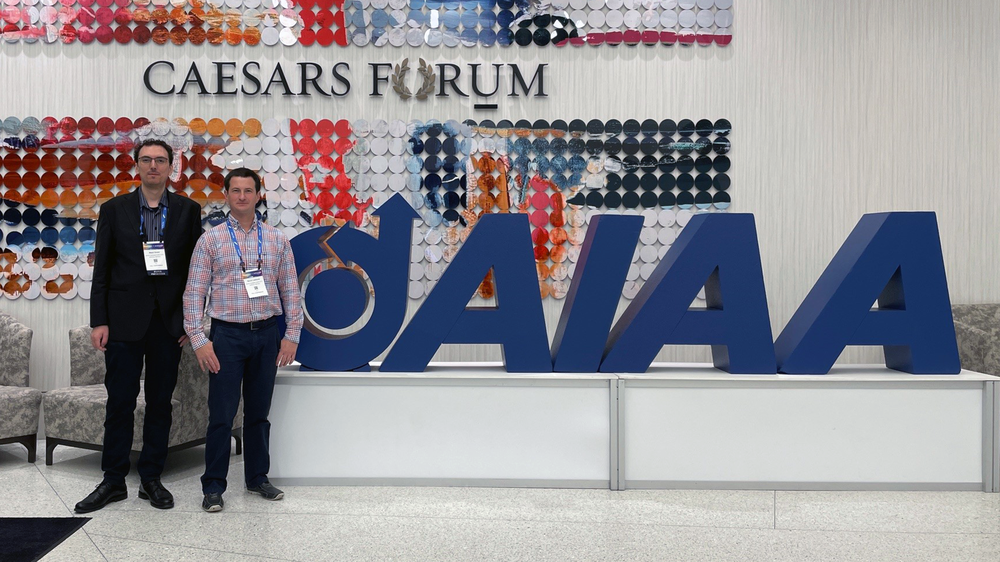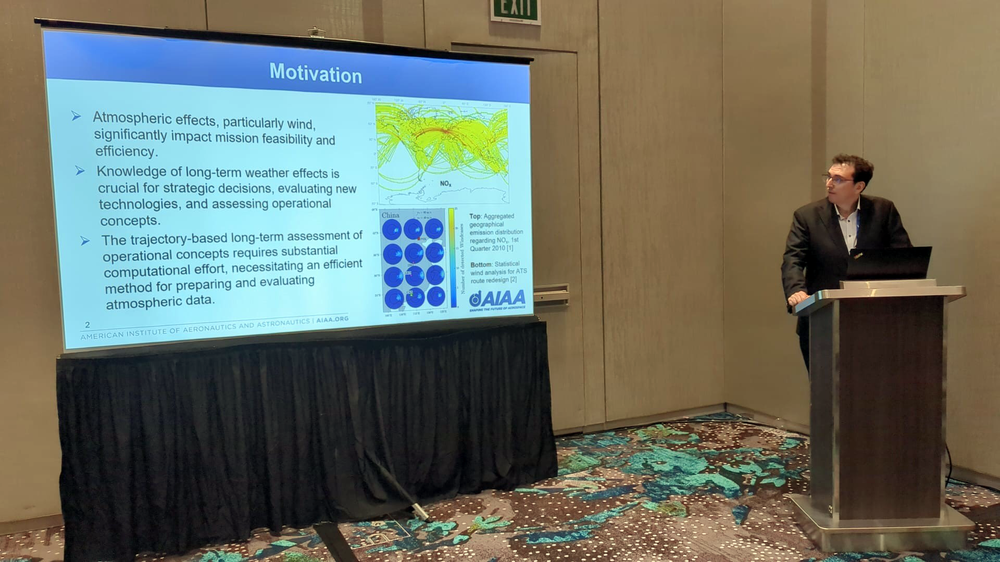Research on Wind Effects and Supersonic Flight Path Routing: DLR Institute of Air Transport at AIAA AVIATION 2024



- Presentations on long-term wind effects on flight distance and supersonic flight path routing
- Insights into flight range optimisation and noise reduction
Presentation at the AIAA AVIATION Forum 2024
From 29 July to 2 August 2024, the AIAA AVIATION Forum took place in Las Vegas. The DLR Institute of Air Transport showcased two research papers that highlight new approaches in aviation.
Quantification of Long-term Wind Effects on Flight Distance
One presentation introduced a methodology for the efficient quantification of long-term wind effects on flight distance1. For general long-term validity, the period of investigation usually needs to span at least 30 years. For the purpose of demonstration, the study applies the method on an atmospheric dataset comprising a three-year period, exemplarily investigating the wind effects on the statistical range of various aircraft types. Additionally, the impact of wind effects was quantified regarding statistical air distance on a high-demand global route network.

Applications of the Methodology
The methodology can be used, for example, in aircraft design to optimise aircraft range considering long-term wind effects along routes with high passenger traffic. It also allows for efficient, long-term evaluation of operational measures, such as quantifying the benefits of climate-compatible flying concepts with minimal effort.
Optimisation of Supersonic Flight Path Routing – Sonic Boom Noise Avoidance through Automated Planning
The second presentation introduced a methodology for the automated optimisation of supersonic flight path routing2. The goal is to ensure that the sonic boom noise from supersonic aircraft does not impact land, thereby avoiding noise pollution for the population. The process consists of four linked computational modules: flight path design, trajectory simulation, boom footprint calculation, and coastal buffer modification. This methodology enables the determination of the optimal route for supersonic flights, considering weather conditions and sonic boom noise emissions.

Practical Application
The results are particularly reliable as real 3-D weather data, including wind information, are used. With the complete simulation chain, an optimised supersonic route can be automatically generated simply by inputting city pairs. This allows operators of potential future supersonic flight routes to find the optimal route with maximum time savings under any atmospheric conditions.
The AAIA AVIATION Forum
The AIAA AVIATION Forum 2024, organised by the American Institute of Aeronautics and Astronautics (AIAA), provided an international platform for knowledge exchange among researchers, engineers, and industry experts. With over 2,900 participants from 41 countries and more than 1,350 technical presentations, this year’s forum was a significant event for the aviation industry.
1 Swaid, M., Linke, F. (DLR Institute of Air Transport) and Gollnick, V. (Hamburg University of Technology), "A Methodology for Efficient Statistical Analysis of Air Distance in Aviation," AIAA Aviation Forum 2024, Las Vegas, USA.
2 Liebhardt, B., Ehlers, T. (DLR Institute of Air Transport) and Shah, R. (Hamburg University of Technology), "Methodology for Automated Supersonic Flight Path Routing and Optimization, " AIAA Aviation Forum 2024, Las Vegas, USA.
